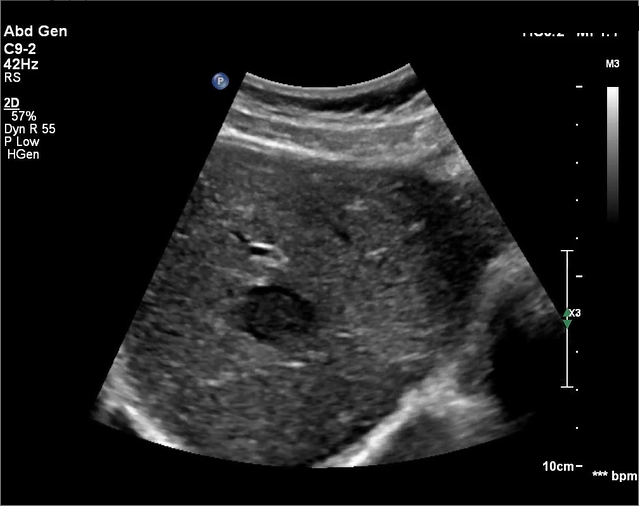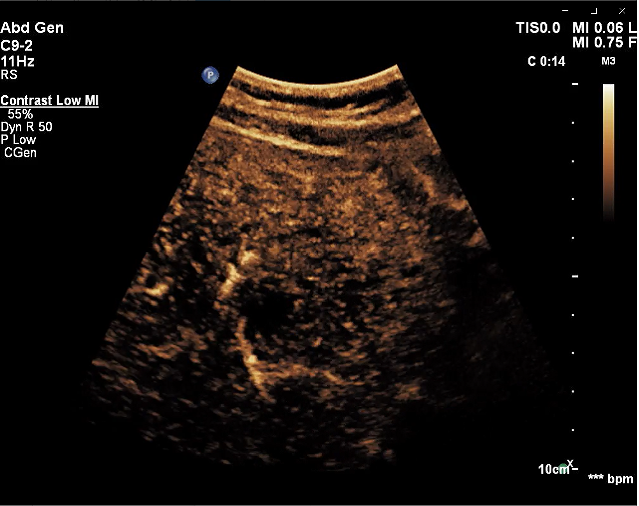Gray-Scale B-Mode:
In the liver parenchyma a hypoechogenic lesion is demarcated in the right liver lobe segment with a max. diameter of approximately 1,8 cm. No major vascularization within this lesion by color-doppler sonography.
63 y/o female patient, came to the baseline check-up.
After injection of intravenous contrast agent the suspicious lesion shows a moderate and prompt contrast uptake. In the portal venous phase the lesion shows wash-out until the end of the late phase and of the examination.
Grey-Scale examination
Color doppler examination
Choose your diagnosis:
CEUS arterial examination
CEUS portal venous phase examination
CEUS portal venous phase examination
CEUS portal venous phase examination
Choose the final diagnosis:


liver metastasis
Liver metastases are the most frequent malignancies of the liver. The grayscale sonographic appearance of metastases varies: they can be hypoechoic, hyperechoic, they can present a peripheral halo, and they can have an infiltrative or cystic appearance. On contrast enhanced ultrasound (CEUS), in the arterial phase, liver metastases can be hyperenhancing or hypoenhancing. Liver metastases present wash-out in the portal and late phases, a typical enhancement pattern.
After intravenous ultrasound – contrast administration the lesion shows moderate contrast uptake in comparison to the liver parenchyma . Slight wash-out in the late phase was observed.
Diagnosis: Due to the contrast uptake a haemorrhage renal cyst could be excluded, afterwards the patient underwent biopsy and an oncozytoma was confirmed.
The information, references and opinions provided on this website do not constitute the offering of medical advice or create a physician-patient relationship between any one or more of (a) the International Contrast Ultrasound Society (ICUS), its directors and members, and the contributors to this website, and (b) you, your patients, and any other party. ICUS makes no express or implied warranties regarding the accuracy or completeness of the information, references and opinions on this website, and ICUS shall not be liable to you, your patients, or anyone else with respect to any medical decision made, or any action taken or not taken, in direct or indirect reliance on this information.





International Contrast Ultrasound Society © 2025. All Rights Reserved.